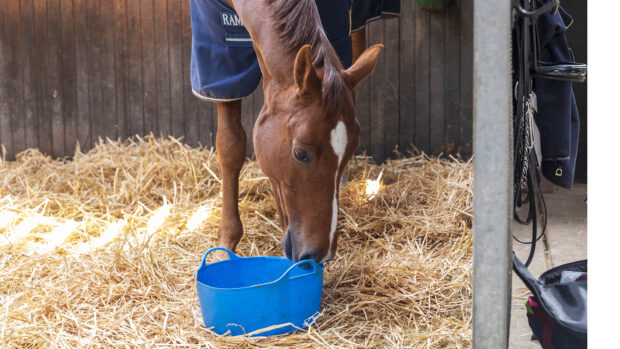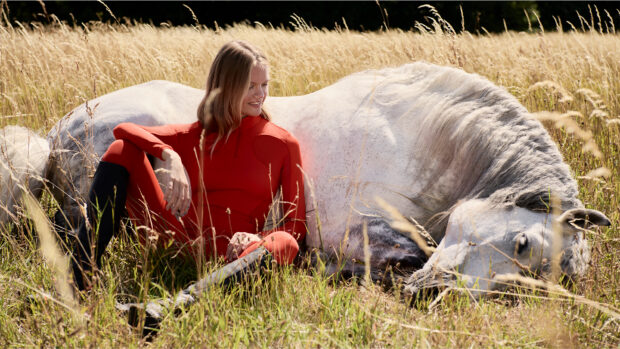Knowing how to measure stirrup leathers will help you to feel secure and comfortable in the saddle. The precise length you decide to ride with is up to personal choice, influenced by your horse’s conformation and your own physical build, but starting out with the appropriate length of leathers that will give you the flexibility to make adjustments is essential. The right length should help support your position and balance as you ride rather than hinder.
Stirrup leathers are available in different lengths according to the manufacturer, and are adjustable via a number of holes. However, if you buy leathers that are too long or short, you will either have to punch extra holes and end up with a long and unwieldy excess bit of leather, or you will be forced to ride shorter than is your preference to keep you secure and balanced in the saddle.

Leather hole punch | Amazon
This punch plier creates six different sized holes (2–4½mm) and can be used to add additional holes to your existing stirrup leathers.
If you use a general purpose saddle for both jumping and dressage, you’ll need to choose stirrup leathers with sufficient range to allow for both disciplines. Saddle flaps and designs will affect the length required, but there is enough adjustability via the holes to ensure the preferred riding length.
The correct length varies according to the discipline as well as personal preference. Dressage requires the longest length with the rider sitting deep in the saddle; showjumpers ride shorter to allow the horse to bascule without the rider’s weight on his back, while for cross-country the stirrups may be shorter still so that the rider can adopt a two-point seat for long gallops.
How to measure stirrup leathers
The basic method is to measure the length of your arm from the armpit to the tips of your fingers, and double this measurement. This should give you a good benchmark of the length required for general riding. This tallies with the established way of checking stirrup length once the horse is tacked up and before you get on. Put your fist on the stirrup bar (the fingertip method allows for the extra length for the stirrup), pull down the stirrup and stretch along your arm to your armpit. This is a good ballpark length, and you can adjust further once you are on or if you are jumping, galloping, doing dressage and so on.
A complicating factor to consider is that some stores allocate metric and others imperial measurements for leathers, while others simply do small, medium and large, or variations on that.
The average rider will use around 54in leathers for jumping and general riding. Short riders may go down to 52in or even 48in, the latter being the usual length for a child. Young children may require 42in or even shorter, so it’s worth shopping around for these or you’ll end up rolling the leather round the stirrup several times to make it short enough for the child to reach. The majority of retailers market their leathers at their full length, for instance 48in, but occasionally they are advertised as the length they would be with a stirrup on, for instance 24in.
Longer leathers for dressage
In dressage, the rider’s leg should hang long against the horse’s side to allow maximum contact for the aids. Dressage saddles allow for the leg to hang lower and straighter than general purpose or jumping saddles. Measure from the inseam of your leg down to the ankle bone, and again double it. It is likely to be six to eight inches longer than the arm-to-fingertips measurement.
The average length is around 60 inches – taller or shorter riders will want to opt for longer and shorter respectively to avoid being at the limits of the range.
Some retailers sell dressage leathers in single thickness to reduce bulk. Bear in mind these leathers will be sized half the length of traditional leathers accordingly.
These measuring techniques are a guideline, and you should always take into account your horse’s conformation, your discipline and your own physical build to find what’s appropriate in each individual circumstance.
You might also be interested to read…

A selection of the best stirrup leathers to complement your saddle
Looking for some new stirrup leathers? Here’s a selection of different types we think are worth a look at...

Technical stirrups — what’s on the market?

Safety stirrups – what are your options?

Tack cleaners and conditioners that will bring shine to any tack room

Subscribe to Horse & Hound magazine today – and enjoy unlimited website access all year round
Horse & Hound magazine, out every Thursday, is packed with all the latest news and reports, as well as interviews, specials, nostalgia, vet and training advice. Find how you can enjoy the magazine delivered to your door every week, plus options to upgrade your subscription to access our online service that brings you breaking news and reports as well as other benefits.



